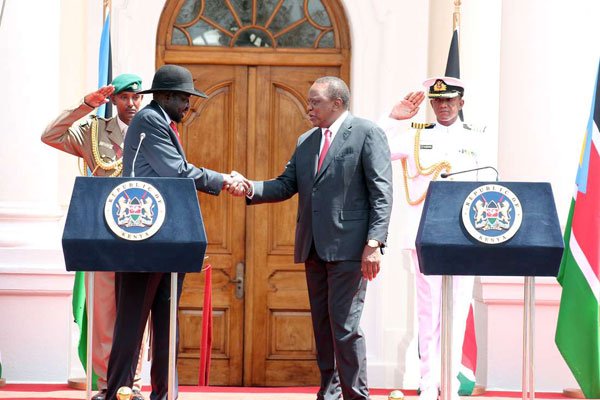Kenya stands to benefit significantly from a peaceful transition in South Sudan. On Saturday, South Sudanese President Salva Kiir and opposition leader Riek Machar announced the formation of the Transitional Government of National Unity (TGoNU).
Dr Machar, leader of Sudan People’s Liberation Movement-in Opposition (SPLM-IO), accepted to rejoin the government as the First Vice President, based on the Revitalised Agreement on the Resolution of Conflict in South Sudan (R-ARCSS), signed in September 2018 in Addis Ababa, Ethiopia.
The two pledged to end a five-year civil war that had sent the country’s nascent economy into convulsions.
Kenya, being one of the largest foreign investors in that country, stands to benefit tremendously with the return of the peace and stability.
Many Kenyans who have invested in sectors such as construction, insurance hospitality, transport and banking will see their businesses recover from effects of the 2016 civil war.
BANKS
Formation of the TGoNU is good news for KCB, Equity, Co-operative and Stanbic banks.
They are among the Kenyan lenders which scaled down their operations after war erupted.
The banks set up shop in South Sudan after it attained independence in 2011, attracted by a large unbanked population and oil wealth.
TRADE
Formation of the unity government is also expected to boost trade between Kenya and South Sudan.
In the recent past, the youngest country in Africa has been a valuable export destination for many Kenyan products including foodstuff.
According to the latest statistics from the Kenya Bureau of Statistics (KBS), Kenya’s exports to South Sudan account for 11.2 per cent of the total exports to the Common Market for East and Southern African (Comesa).
This, arguably, places South Sudan as one of the largest export destinations for Kenya out of 18 other Comesa members.
DEVELOPMENT PROJECTS
The return of peace in Southern Sudan will also boost key projects such as the Lamu Port South Sudan Ethiopia Transport (Lapsset) corridor, which will spur socio-economic development in Kenya and the region.
Kenya, South Sudan and Ethiopia jointly launched the infrastructure project in March 2012.
It involves construction of a new transport corridor for the new port of Lamu, through the Kenyan towns of Garissa and Isiolo.
One part of the corridor is meant to connect Kenya and Ethiopia while the other will connect Kenya and South Sudan through the border town of Nakodok.
The project entails construction of a new road network, a railway line, an oil refinery in Lamu, airports in Lamu and resort cities at Isiolo and the shows of Lake Turkana.
It will promote trade along the corridor hence open northern Kenya up to faster development
REFUGEES MENACE
The number of South Sudanese refugees hosted in Kenya reached 120,452 as at end of October 2019, according to figures from United Nations High Commissioner for Refugees.
Many are likely go back home if political stability returns with establishment of the unity government.
This will relieve Kenya of the pressure of hosting many refugees in camps such as Kakuma in Turkana County and Dadaab in Garissa County.
When he meet Dr Machar in Juba on Thursday, President Kiir expressed hope that the next three years of the transitional period will pave way for refugees in neighbouring countries and internally displaced persons to return to their homes.
“The recent changes are meant for peace to be achieved. They are not meant to bring conflict back. In the next three years, we want to see new changes,” he said.
REGIONAL PEACE
The return of peace in South Sudan is also likely to enhance regional stability.
It will stem the proliferation of illegal small arms and weapons.


